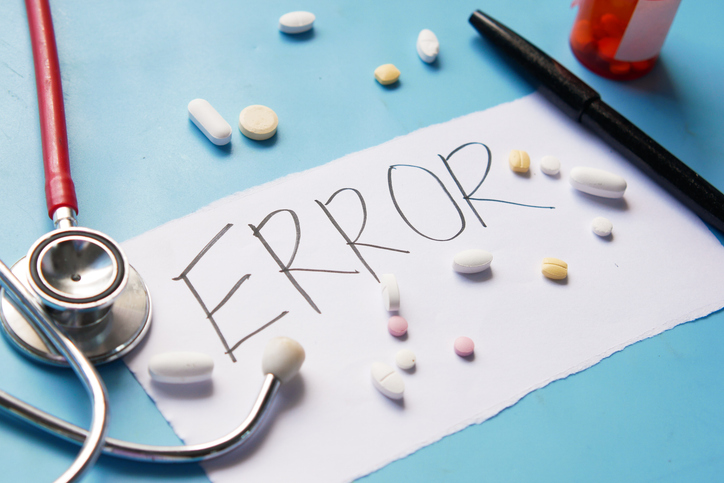Incident reporting is essential to maintain a healthcare organization’s compliance with state and federal regulations and reveal what are the main types of healthcare incidents. They may be caused by simple human error, a one-time mistake, or a repeated incident due to a process failure. Incident reporting creates a culture of safety and allows healthcare organizations to seek continuous improvement in their care practices.
What Is an Incident Report?
An incident report is thorough documentation of the incident, including all relevant details that caused it and any outcomes that stemmed from it. The key to a good incident report is completeness and accuracy, and that means documenting as much information as possible.
What Are the Main Types of Healthcare Incidents?
Healthcare incidents can encompass a wide range of events that compromise patient and staff safety or quality of care.
Here are some examples:
Medication Errors
 |
Medication errors occur when there are mistakes in prescribing, dispensing, administering, or monitoring medications, leading to patient harm or adverse reactions. |
Fact: Each year, in the U.S. alone, 7,000 to 9,000 people die due to a medication error. Additionally, hundreds of thousands of other patients experience but often do not report an adverse reaction or other complications related to a medication. National Institutes for Health
Diagnostic Errors
 |
Errors in diagnosis, including misinterpretation of test results, failure to order appropriate tests or delayed diagnosis, can lead to incorrect treatment or worsening of the patient’s condition. |
Fact: One in 20 adults annually experiences a diagnostic error in outpatient settings. An estimated 250,000 diagnostic errors occur annually in U.S. hospitals. Agency for Healthcare Research and Quality
Hospital-Acquired Infections (HAIs)
 |
Infections patients acquire in a healthcare facility often due to inadequate infection control practices or exposure to pathogens in the hospital environment. |
Fact: In American hospitals alone, the Centers for Disease Control (CDC) estimates that HAIs account for an estimated 1.7 million infections and 99,000 associated deaths each year – 32% are urinary tract infections.
Centers for Disease Control and Prevention
Falls and Patient Accidents
 |
Incidents involving patients falling or experiencing accidents, such as slips, trips, or falls in healthcare facilities, can result in injuries or complications. |
Fact: Each year, roughly 700,000 to 1 million patient falls occur in U.S. hospitals resulting in around 250,000 injuries and up to 11,000 deaths. National Institutes for Health
Communication Breakdowns
 |
Errors or failures in communication among healthcare providers, patients, and caregivers, lead to misunderstandings, delays in treatment, or inappropriate care. |
Fact: 80% of serious medical errors resulted from miscommunication between caregivers during patient handovers. Communication failures resulted in $1.7 billion in malpractice costs and almost 2,000 preventable deaths.
The Joint Commission
Equipment Failures
 |
Malfunctioning or misusing medical equipment and devices, such as infusion pumps, ventilators, or monitoring systems, can compromise patient safety and care delivery. |
Fact: In 2024, 26 medical device recalls have been reported, including those for ventilator kits, blood pumps, and feeding tubes. There were 13 recalls during the same period in 2023. Food and Drug Administration
Patient Rights Violations
 |
Incidents involving breaches of patient confidentiality, informed consent issues, or disregard for patient autonomy and dignity. |
Fact: In 2023, hackers and thieves exposed, stole, or impermissibly disclosed 133 million patients records. There were 45.9 million in 2021 and 51.9 million in 2022. HHS Office for Civil Rights
Systemic Failures
 |
Issues stemming from deficiencies in healthcare systems, policies, or organizational cultures, such as understaffing, inadequate training, or lack of resources, may contribute to patient harm or errors in care delivery. |
Fact: Projections estimate U.S. healthcare organizations will have to fill more than 203,000 open nursing positions annually until 2031. Bureau of Labor Statistics
Create Report Templates for the Main Types of Healthcare Incidents
Incident types can vary based on geography, patient population, and more. By creating incident report templates for each type of incident, you can ensure the fields are relevant and don’t leave employees guessing the information to complete. Plus, customized templates make it easier to analyze incident report data and bring attention to what needs to be investigated.
If you currently use one form for every healthcare incident type, ask yourself a few questions to determine if multiple forms would benefit your organization.
- Is my incident report form too long?
- Are employees often skipping questions?
- Are employees often submitting incorrect information?
- Are employees using an outdated form?
- Is there specific information about incidents that I’m not currently getting?
If you answered yes, creating report forms for healthcare incidents would benefit your organization.
Wondering how you could manage that using your current system? Maybe you need new incident reporting software.
Simplify Incident Reporting With Software
Determining the main types of healthcare incidents and how to report them is critical for healthcare organizations. A digital incident reporting system makes that easier with:
- Accessibility: Digital platforms/mobile apps offer 24/7 reporting access from anywhere.
- Unlimited Templates: Customize and edit as many templates as needed to simplify the process.
- Ease of Use: Customize report types, then track and analyze.
- Easy to Escalate: Choose who to notify based on report type, location, etc.
- Anonymous: Protect the confidentiality of the reports and the identities of reporters.
- Quick Resolution: Forward so action and resolution can happen more quickly.
MedTrainer offers all the functions listed above in an all-in-one compliance solution. Enhance your compliance programs with digital incident reporting solutions for organizations of any size. Contact us to learn more.
